#William J. McCloskey
Photo

William J. McCloskey (American, 1859-1941), Oranges in Tissue Paper, 1889. Oil on canvas, 12 x 16 in.
2K notes
·
View notes
Photo

“ORANGES IN TISSUE PAPER”
WILLIAM J. MCCLOSKEY // 1889
[oil on canvas | 12 x 16″]
2K notes
·
View notes
Text

William J. McCloskey - Wrapped Oranges (1889)
794 notes
·
View notes
Text

William J. McCloskey / "Wrapped Oranges" / 1889 / Amon Carter Museum of American Art
146 notes
·
View notes
Text

Paint an orange. After you have it done, introduce a white thing...Take an egg or an orange, a piece of black cloth, and a piece of white paper and try to get the light and color.
Wrapped Oranges 1889, by William J. McCloskey (1859-1941) // text: quoted in An American Collection: Works from the Amon Carter Museum, Fort Worth, Texas, 2001, p. 124)
#museum of american art#william J. mccloskey#amon carter museum#an american collection#oranges#oil on canvas#light academia#oil painting#orange#artwork
16 notes
·
View notes
Text
favourite poems of july
knar gavin strindberg grey
dahlia ravikovitch the love of an orange (tr. chana bloch)
danez smith summer, somewhere
hannah gamble your invitation to a modest breakfast: “your invitation to a modest breakfast”
claire schwartz lecture on the history of the house
joseph brodsky collected poems in english, 1972-1999: “a part of speech”
ralph angel twice removed: “alpine wedding”
bob hicok insomnia diary: “spirit ditty of no fax-line dial tone”
caleb klaces language is her caravan
philip good & bernadette mayer alternating lunes
hester knibbe light-years (tr. jacquelyn pope)
tracy k. smith life on mars: “the universe as primal scream”
rigoberto gonzález other fugitives and other strangers: “the strangers who find me in the woods”
stephen edgar murray dreaming
james schuyler other flowers: uncollected poems: “light night”
amy beeder because our waiters are hopeless romantics
diane seuss backyard song
tomás q. morín love train
safiya sinclair the art of unselfing
carol muske-dukes skylight: “the invention of cuisine”
peter gizzi the outernationale: “vincent, homesick for the land of pictures”
william matthews selected poems and translations, 1969-1991: “onions”
c.k. williams butcher
mark mccloskey the smell of the woods
jennifer chang the age of unreason
richard blanco city of a hundred fires: “contemplations at the virgin de la caridad cafeteria, inc.”
bob hicock the pregnancy of words
j. allyn rosser impromptu
carl phillips then the war
stephanie young ursula or university: “essay”
gloria e. anzaldúa the new speakers
kofi
#tbr#knar gavin#strindberg grey#strindberg gray#dahlia ravikovitch#the love of an orange#chana bioch#danez smith#summer somewhere#hannah gamble#your invitation to a modern breakfast#claire schwartz#lecture on the history of the house#joseph brodsky#collected poems in english#a part of speech#collected poems in english 1972-1999#ralph angel#twice removed#alpine wedding#bob hicock#insomnia diary#spirit ditty of no-fax dial tone#caleb klaces#language is her caravan#philip good#alternating lunes#bernadette mayer#hester knibble#light-years
669 notes
·
View notes
Text

William J. McCloskey, Valencia Oranges, 1889
#some art i saw with ratatouille#i absolutely loved this painting#like i love the length with how its like a longer and skinnier rectangle#AND OFC I LOVE THE ORANGES#like i saw and immediaelty was like OFC I MUST MAKE MY OWN GENERIC ORANGE WEBWEAVING POST AND INCLUDE IT#and also besides that the meaning besdies it and the symbolism with how it related to the rail service#was super cool and i really liked that history aspect of how they wrapped the oranges in tissue paper to preserve them#so i like that this also reflected on labor and just transportation trends in america#AND THEN RATATOUILLE POINTED OUT THE REFLECTION ON THE TABLE#LIKE THATS INSANE#anyway i just really love this piece#ncma
14 notes
·
View notes
Text
New Center Could Soon Reduce the Need for Pharmaceutical Trials on Animals - Technology Org
New Post has been published on https://thedigitalinsider.com/new-center-could-soon-reduce-the-need-for-pharmaceutical-trials-on-animals-technology-org/
New Center Could Soon Reduce the Need for Pharmaceutical Trials on Animals - Technology Org
Rochester is one of four NIH-sponsored centers that aims to produce tissue-on-chip devices as FDA-qualified drug development tools.
The University of Rochester will house a new national center focused on using tissue-on-chip technology to develop drugs and reduce the need for animal trials rapidly. The National Institutes of Health awarded a $7.5 million grant to establish the Translational Center for Barrier Microphysiological Systems (TraCe-bMPS) at Rochester in partnership with Duke University.
‘CLINICAL TRIALS ON CHIP’: The chips produced by TraCe-bMPS will feature photonic biosensors crafted by Benjamin Miller, a Dean’s Professor of Dermatology at Rochester with joint appointments in biomedical engineering, biochemistry and biophysics, optics, and materials science. Image credit: University of Rochester photo / Benjamin Miller Lab
The center aims to develop five Food and Drug Administration–qualified drug development tools related to study barrier functions in disease—interfaces in tissue that are critical for the progression of infection, cancer, and many autoimmune disorders. Over the five-year grant, the researchers will create drug development tools specifically related to central nervous system disorders, fibrosis, musculoskeletal autoimmune disease, sepsis, and osteomyelitis.
The TraCe-bMPS scientists will create the drug development tools using microphysiological systems—small chips with ultrathin membranes of human cells. They will be built using the modular, mass-producible µSiM chips pioneered by center director James McGrath, the William R. Kenan Jr. Professor of Biomedical Engineering.
McGrath says that testing drugs on µSiM chips can lead to fewer animal trials. And because researchers will be studying the drugs’ effects on human cells, they may also help overcome some of the critical differences between testing on humans and animals.
ALL MICROPHYSIOLOGICAL SYSTEMS GO: Researchers at the University of Rochester’s new Translational Center for Barrier Microphysiological Systems (TraCe-bMPS) develop drug development tools using the modular, mass-producible µSiM chips pictured here and pioneered by center director James McGrath, the William R. Kenan Jr. Professor of Biomedical Engineering. (University of Rochester photo / J. Adam Fenster)
“Drug discovery is moving into an era where fewer animals are used to test for safety and efficacy,” says McGrath. “Instead, more screening will be done on tissue chips that pattern human cells to mimic human tissue and disease. Our chips are designed to provide the higher throughput and more reliable indications that pharmaceutical companies need to get their drugs approved for clinical trials and use by patients.”
Hani Awad, the Donald and Mary Clark Distinguished Professor in Orthopaedics and a professor of biomedical engineering, will serve as the associate director for development. He says Congress passing the FDA Modernization Act 2.0 in 2022 made the center possible and that the team is excited to help shape the future of drug development.
“The timing could not be more perfect,” says Awad. “As a biomedical engineer and scientist, I find the elegant fusion of engineering and biology inherent in the design and validation of these tissue chips as disease models and drug-testing platforms to be one of my most rewarding professional pursuits. I can’t wait to see what this team will develop over the next five years, and beyond.”
CHIPPING IN: Biomedical engineering PhD students Danial Ahmad (L) and Molly McCloskey assemble fixtures used to guide components and membrane chips to create the modular µSiM tissue chip platform, featuring an ultrathin nanomembrane. (University of Rochester photo / J. Adam Fenster)
The chips will feature photonic biosensors crafted by Benjamin Miller, a Dean’s Professor of Dermatology at Rochester with joint appointments in biomedical engineering, biochemistry and biophysics, optics, and materials science. Miller, the center’s associate director for resources, says the center is the culmination of years of research and collaboration.
“Getting our devices qualified by the FDA as drug development tools will mean that we’re a step closer to doing ‘clinical trials on chip’ with fully human models, increasing the likelihood of a drug candidate being successful when it actually gets to human clinical trials,” says Miller. “This is also a great opportunity to build an interdisciplinary training environment for our students and expand a collaboration with my colleagues that has been very productive.”
Joan Adamo, director of the Office of Regulatory Support at the University of Rochester Medical Center’s Clinical and Translational Science Institute, will serve as associate director and prepare all submissions to the FDA for qualification. Adamo says she sees the ambitious program having far-reaching implications.
“This unique program involves close collaboration with the FDA through a series of qualification steps—a critical aspect to addressing unmet needs,” says Adamo. “I am looking forward to working closely with the agency and our collaborators on this regulatory science project. We will achieve qualification of these vital drug development tools, which will accelerate research conducted at URMC and be shared with other academic health centers and industry programs.”
Source: University of Rochester
You can offer your link to a page which is relevant to the topic of this post.
#2022#Administration#Animals#barrier#biochemistry#Biology#biophysics#biosensors#Biotechnology news#Cancer#Cells#Chemistry & materials science news#chips#Collaboration#Companies#Design#development#Development Tools#devices#Disease#disorders#drug#drug development#drug discovery#drugs#effects#Engineer#engineering#Environment#FDA
0 notes
Video
youtube
Liked on YouTube: We Need to Talk About Boomers || https://www.youtube.com/watch?v=HJl83vNuDL4 || Okay Boomer! Okay Millennials! Let's talk about how older adults are a marginalised group, how ageism is a socially acceptable form of bigotry, and how the generation war narrative helps capitalists. And while we're at it, let's make a vegan Irish stew with Guinness, and let's talk to our Dads because they're cool. Support the channel on Patreon ►► https://ift.tt/UfXFsc8 References: Arcoverde, C., Deslandes, A., Rangel, A., Rangel, A., Pavão, R., Nigri, F., Engelhardt, E. & Laks, J. (2008). Role of physical activity on the maintenance of cognition and activities of daily living in elderly with Alzheimer's disease. Arquivos de neuro-psiquiatria, 66(2B), 323-327. Babyak, M., Blumenthal, J.A., Herman, S., Khatri, P., Doraiswamy, M., Moore, K., Craighead, W.E., Baldewicz, T.T. & Krishnan, K.R. (2000). Exercise treatment for major depression: maintenance of therapeutic benefit at 10 months. Psychosomatic Medicine, 62(5), 633-638. Butler, R. N. (1969). Ageism: Another form of bigotry. The Gerontologist, 9(4), 243–246 Burton, E. and Mitchell, L. (2006). Inclusive urban design: Streets for life. Elsevier. Fisher, M. (2009). Capitalist realism: Is there no alternative?. John Hunt Publishing. Fukuyama, F. (1989). The end of history?. The national interest, (16), 3-18. Greenberg, L., 1982. The implication of an ageing population for land-use planning. Geographical Perspectives on the Elderly, 401-425. Grusky DB, Mattingly M, Varner C, et al. (2019) Millennials in the United States. In Stanford Center on Poverty and Inequality (eds.) State of the Union: The Poverty and Inequality Report. Pathways Magazine, 3–6. Hamilton, M., & Hamilton, C. (2006). Baby boomers and retirement. Dreams, fears, and anxieties. Sydney: The Australian Institute. Ipingbemi, O. (2010). Travel characteristics and mobility constraints of the elderly in Ibadan, Nigeria. Journal of Transport Geography, 18(2), 285-291. King, A., & Almack, K. (2019). Intersections of ageing, gender, sexualities: Multidisciplinary international perspectives. 17 Leigh-Hunt, N., Bagguley, D., Bash, K., Turner, V., Turnbull, S., Valtorta, N., & Caan, W. (2017). An overview of systematic reviews on the public health consequences of social isolation and loneliness. Public health, 152, 157-171 Li, Z., & Dalaker, J. (2019). Poverty among Americans aged 65 and older. Washington, DC: Congressional Research Service. Lim, Y. J., & Lemanski, J. (2020). A generational war is launched with the birth of Ok Boomer in the digital age. The Journal of Society and Media, 4(1). Marottoli, R. A., De Leon, C. F. M., Glass, T. A., Williams, C. S., Cooney Jr, L. M., Berkman, L. F., & Tinetti, M. E. (1997). Driving cessation and increased depressive symptoms: Prospective evidence from the New Haven EPESE. Journal of the American Geriatrics Society, 45(2), 202-206. Mueller, J. C., & McCollum, J. (2021). A Sociological Analysis of “OK Boomer”. Critical Sociology, 08969205211025724. Nordbakke, S. (2013). Capabilities for mobility among urban older women: barriers, strategies and options. Journal of transport geography, 26, 166-174. Pinquart, M., & Sörensen, S. (2000). Influences of socioeconomic status, social network, and competence on subjective well-being in later life: a meta-analysis. Psychology and aging, 15(2), 187. Pope, S.K., Shue, V.M. & Beck, C. (2003). Will a healthy lifestyle help prevent Alzheimer's disease?. Annual Review of Public Health, 24(1), 111-132. Quoidbach, J., Gilbert, D. T., & Wilson, T. D. (2013). The End of History Illusion. Science, 339(6115), 96–98. Röhr, S., Rodriguez, F. S., Siemensmeyer, R., Müller, F., Romero‐Ortuno, R., & Riedel‐Heller, S. G. (2022). How can urban environments support dementia risk reduction? A qualitative study. International journal of geriatric psychiatry, 37(1). Troya, M. I., Babatunde, O., Polidano, K., Bartlam, B., McCloskey, E., Dikomitis, L., & Chew-Graham, C. A. (2019). Self-harm in older adults: systematic review. The British Journal of Psychiatry, 214(4), 186-200. Troya, M. I., Dikomitis, L., Babatunde, O. O., Bartlam, B., & Chew-Graham, C. A. (2019). Understanding self-harm in older adults: a qualitative study. EClinicalMedicine, 12, 52-61. World Health Organization (WHO). (2016) Mental Health and older adults. Media Centre Fact Sheets. World Health Organization. World Health Organization (WHO). (2021). Global report on ageism. Yasamy, M. T., Dua, T., Harper, M., & Saxena, S. (2013). Mental health of older adults, addressing a growing concern. Mental health and older people, 4-9. Yon, Y., Mikton, C. R., Gassoumis, Z. D., & Wilber, K. H. (2017). Elder abuse prevalence in community settings: a systematic review and meta-analysis. The Lancet Global Health, 5(2), e147-e156. Yon, Y., Ramiro-Gonzalez, M., Mikton, C. R., Huber, M., & Sethi, D. (2019). The prevalence of elder abuse in institutional settings: a systematic review and meta-analysis. European journal of public health, 29(1), 58-67.
0 notes
Photo
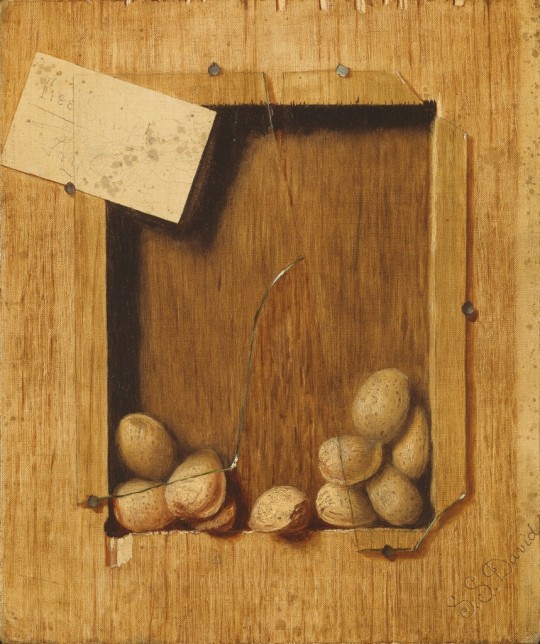

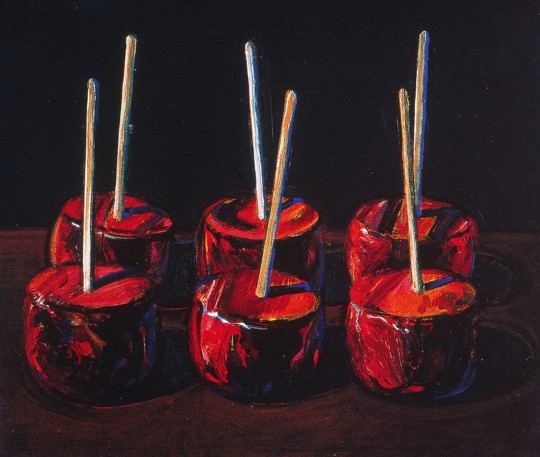
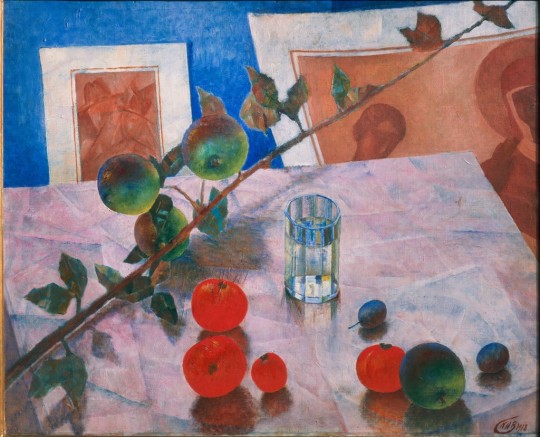
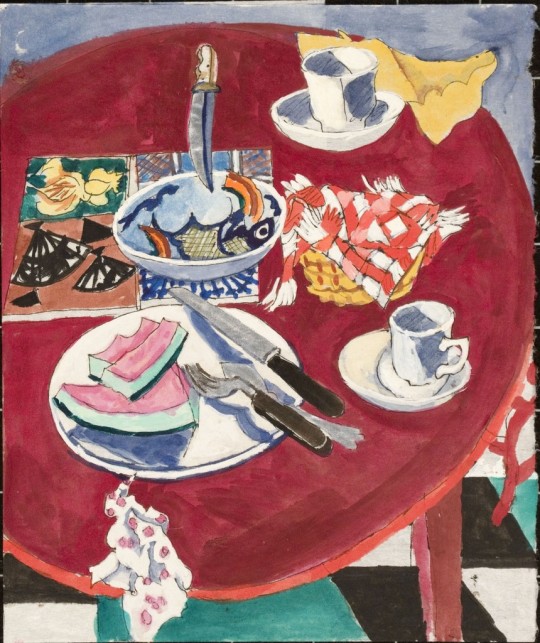

Food and Still Life Painting
I think still life painting is an important process to study when trying to depict seasonal food, because that is how it has been depicted fro centuries throughout he renaissance and Baroque eras. It has shown beauty and meaning in the every day mealtime, the intention behind it, the purposeful work, and romance as well. Still life painting techniques are essential to study when depicting food, as I do want to employ certain levels of realism within my images
Image credits:
Kuz'ma Petrov-Vodkin. (1918). Pink Still Life (Still Life with Apple Tree Branch). [painting]. Retrieved from https://library-artstor-org.ezproxy.aut.ac.nz/asset/SCALA_ARCHIVES_10313880116
Grotenrath, Ruth Dorothy (American artist, 1912 AD - 1988 AD). (1970s). [Table with food still life]. [paintings]. Retrieved from https://library-artstor-org.ezproxy.aut.ac.nz/asset/SS35559_35559_21446884
De Scott Evans (American, 1847 - 1898). (1887-1888). Free Sample, Try One. [paintings]. Retrieved from https://library-artstor-org.ezproxy.aut.ac.nz/asset/AMONIG_10313892923
Schooten, Floris van, fl. 1605-1655. ([n.d.]). Kitchen Interior: det.: Foot at Right. Retrieved from https://library-artstor-org.ezproxy.aut.ac.nz/asset/ARTSTOR_103_41822000765360
Thiebaud, Wayne. (1983). Dark Candy Apples. Retrieved from https://library-artstor-org.ezproxy.aut.ac.nz/asset/ARTSTOR_103_41822003639539
William J. McCloskey (American, 1859-1941). (1889). Strawberries. [PAINTINGS]. Retrieved from https://library-artstor-org.ezproxy.aut.ac.nz/asset/TERRA_DB_103997267
0 notes
Photo

Strawberries - William J. McCloskey, 1889.
Anerican,1859-1941
oil on canvas, 12 x 16 in.
356 notes
·
View notes
Photo

Wrapped Oranges, William J. McCloskey, 1889.
274 notes
·
View notes
Photo

Valencia Oranges, William J. McCloskey, 1889
#art#art history#William J. McCloskey#William Joseph McCloskey#still life#oranges#American art#19th century art
307 notes
·
View notes
Photo

William J. McCloskey (American, 1859-1941), Florida Lemons, 1889
Oil on canvas, 11 x 24 in
31 notes
·
View notes
Text

I got bored and found a template so HERE-
#young guns#young guns 2#billy the kid#billy bonney#william bonney#dirty steve stephens#charley bowdre#richard dick brewer#j mccloskey#jose chavez y chavez
66 notes
·
View notes
Photo
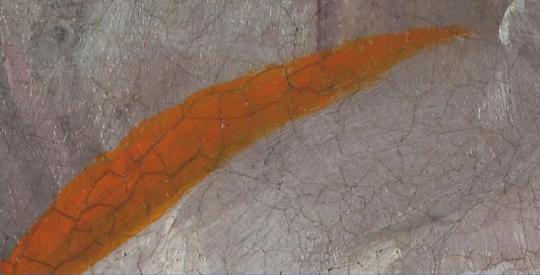
William J. McCloskey - Wrapped oranges, 1889 det
3 notes
·
View notes